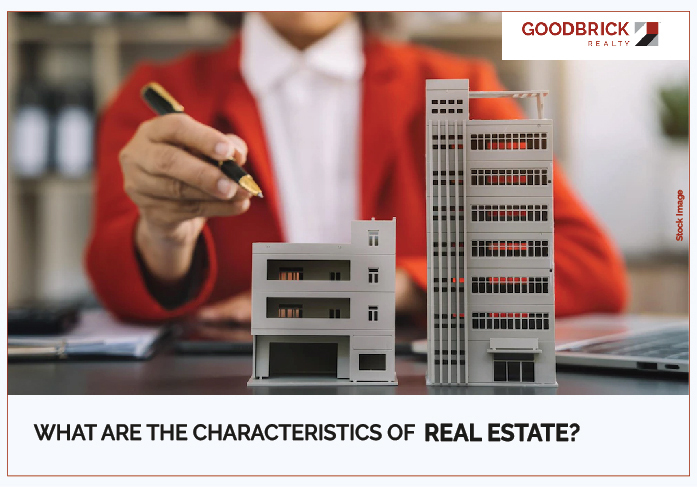
Real estate is not merely about buildings or land. It encapsulates the tangible and intangible aspects associated with properties and their ownership, reflecting a broader economic and societal landscape.
People often use the words land, real estate, and real property interchangeably, but they’re not exactly the same.
Land means the ground itself, all the way from under the surface to the sky above, including things like trees, minerals, and water. Land doesn’t move, can’t be destroyed, and each piece is different from others because of where it is.
At its core, real estate represents the land and any improvements to it, ranging from residential homes to commercial spaces. Its value is not solely in the physical structures but also in the location, utility, and potential for future development. For example, a high demand for luxury villas in Khandala indicates attractiveness for investors and potential homeowners.
Real estate growth serves as a significant economic indicator due to its wide-ranging impact on various sectors of the economy. Here’s a detailed breakdown:
India is prioritising becoming a global manufacturing centre but often overlooks the significant contribution of the domestic real estate sector. This sector, second only to agriculture in job creation, has consistently added about 11% to Gross Value Added (GVA) growth since 2011–12. It serves as a crucial driver of both economic value and employment, with extensive connections to other industries contributing to nearly 50% of India’s GDP. For instance, the high demand for villas for sale in Lonavala over other types of properties indicates evolving consumer demands and lifestyle choices.
In India, real estate holds a paramount position, symbolising stability, security, and prosperity for many families. The dream of owning property, especially extraordinary properties like luxury villas in Khandala, embodies aspirations and status.
The word ‘real’ refers to the actual aspect of property ownership, which distinguishes it from other assets. Its physical presence and lasting value define its authenticity in the investment landscape.
| Feature | Personal Property | Real Property |
| Definition | Things That You Own That Can Be Moved. | Things That You Own That Are Attached To Land. |
| Examples | Cars, Furniture, Clothes, Jewellery, Art | Land, Buildings, Houses, Apartments |
| Type | Tangible Or Intangible | Always Tangible |
| How Do You Transfer Ownership? | With A Title | With A Deed |
Now let’s dive more into details and understand the characteristics of real estate.

Real estate has seven features that are either financial or physical. While the physical characteristics of the land are tied to the land itself, its economic components define its investment potential and market value.
The significance of a property’s location cannot be overstated. It determines accessibility, amenities, and demand, influencing its value significantly.
Limited land availability increases its value, accentuating the concept of scarcity in real estate markets.
Improvements made to a property, such as infrastructure development or renovations, contribute to its value appreciation.
Real estate investments typically withstand economic fluctuations, offering long-term stability and potential appreciation.
Properties possess unique characteristics that set them apart, catering to diverse preferences and lifestyles.
Real estate endures the test of time, creating legacies and serving as a generational asset for families.
Exploring the various facets of real estate unveils its significance, from being an economic barometer to representing aspirations and stability.
Whether it’s the allure of luxury villas or the investment potential of Goodbrick Realty properties, real estate epitomises far more than physical structures—it embodies dreams, aspirations, and the essence of security.
Real estate development is the process of creating and improving real estate. This can involve anything from renovating an existing building to purchasing raw land and constructing a new one. Real estate developers play a vital role in the economy, as they are responsible for creating the housing and commercial spaces that we all rely on.
There are many reasons why investing in real estate can be a good decision. Some of the benefits include:
The real estate industry is a complex and multifaceted one. It involves a wide range of players, including developers, brokers, agents, lenders, and appraisers. The industry is also heavily regulated by the government.
Here is a simplified overview of how the real estate industry works:
Real estate investment is the purchase of real estate with the intention of generating income or appreciation. There are many different types of real estate investments, including:
The Real Estate Regulatory Authority (RERA) is a regulatory body that was established by the Indian government in 2016. RERA is responsible for regulating the real estate sector in India and protecting the interests of homebuyers.
Some of the key functions of RERA include: